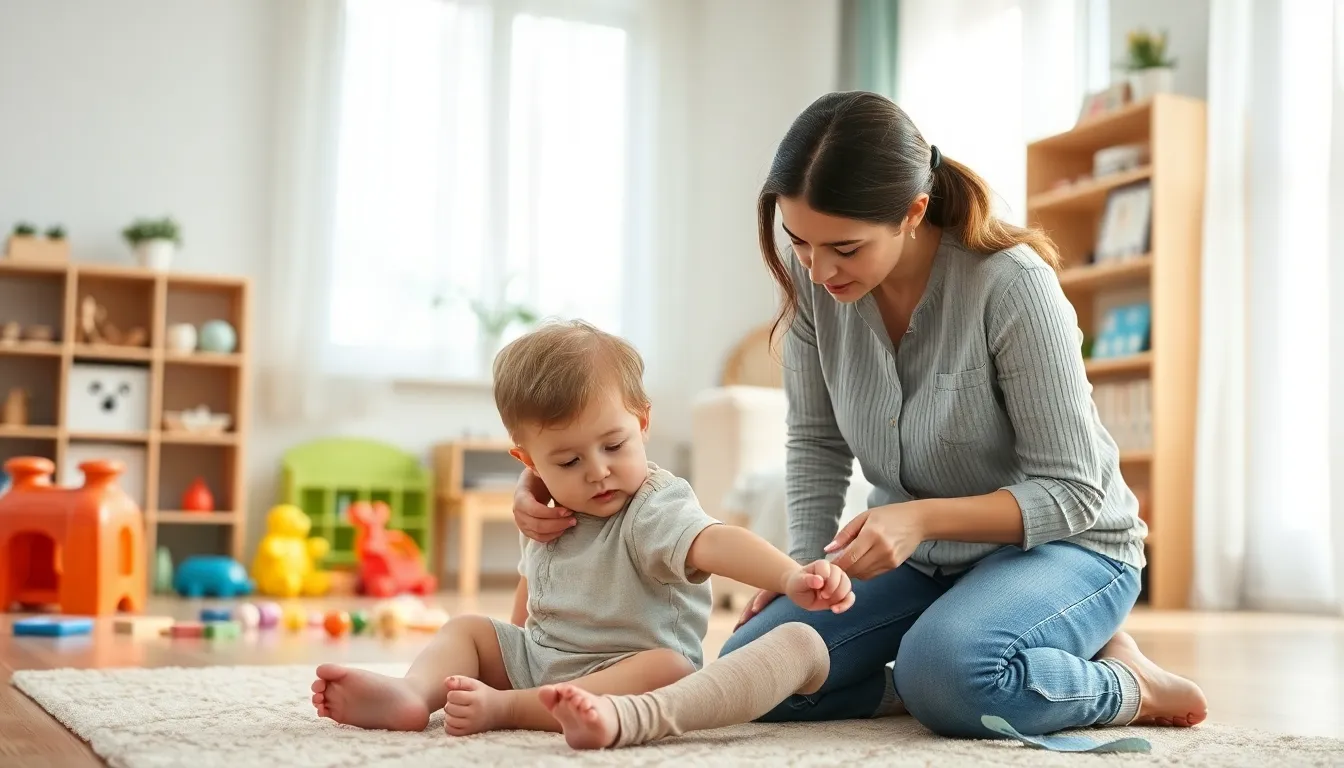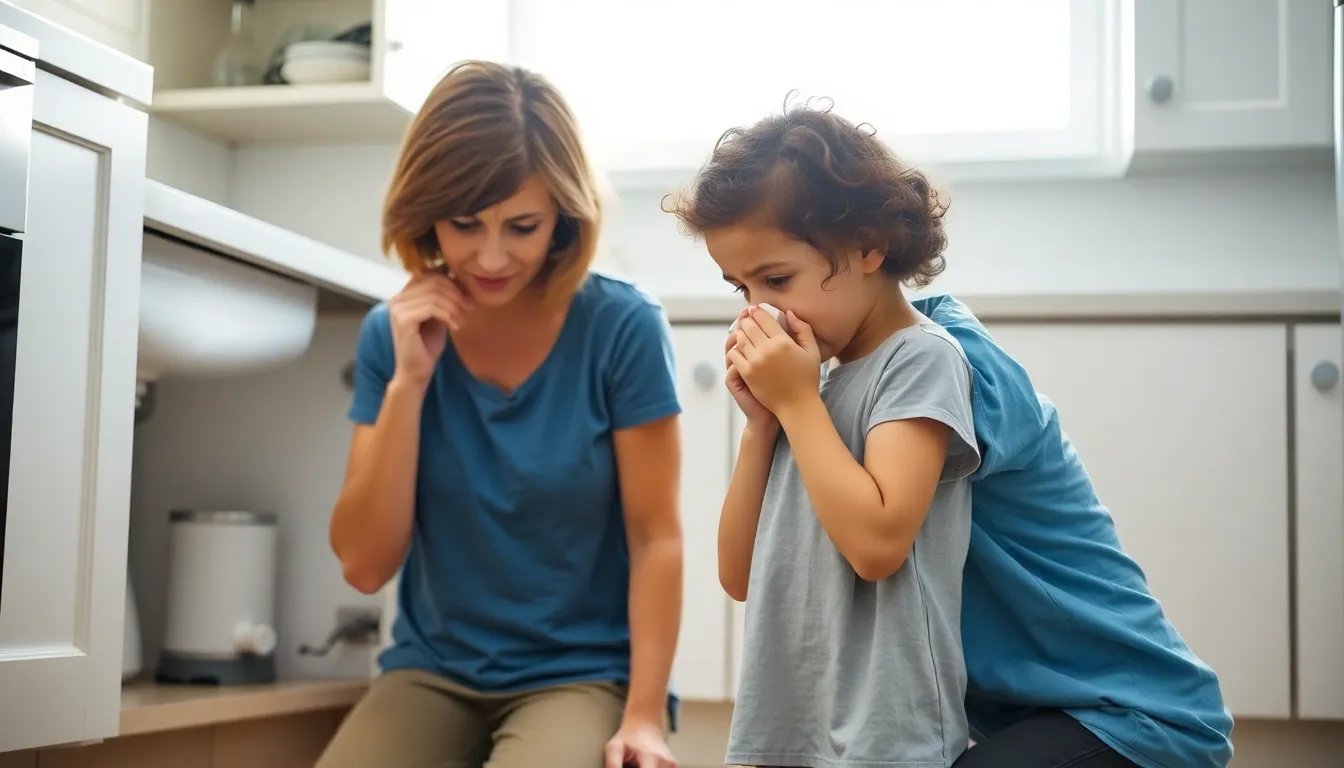Table of Contents
ToggleMold might seem like an innocent house guest, but when it overstays its welcome, it can wreak havoc on kids’ health. Parents often underestimate the sneaky ways mold can affect their little ones, turning a simple sneeze into a potential horror story. Ever seen a child sneeze like they’ve just inhaled a cloud of glitter? That’s not just a cute trick; it could be a sign of mold exposure.
Understanding Mold Exposure
Mold exposure poses significant health risks, particularly for children. Recognizing these risks helps parents protect their kids from potential harm.
What Is Mold?
Mold consists of tiny fungi that thrive in damp environments. It reproduces through spores, which can easily spread through the air. Varieties of mold exist, with some common types including Aspergillus, Cladosporium, and Stachybotrys. Exposure to mold can trigger various respiratory symptoms, particularly in young individuals. Understanding mold’s nature creates awareness about possible health implications.
Common Sources of Mold in Homes
Damp areas in homes frequently harbor mold growth. Basements, bathrooms, and kitchens often experience moisture buildup. Leaky roofs and plumbing contribute to this problem, allowing water to seep into spaces. Additionally, poor ventilation in areas like attics can encourage mold proliferation. Food items, particularly bread and fruit, can also develop mold if left exposed. Identifying these common sources enables proactive measures to prevent mold exposure.
Symptoms of Mold Exposure in Kids

Mold exposure can lead to various symptoms in children. Recognizing these symptoms is essential for early intervention and safeguarding their health.
Respiratory Symptoms
Respiratory issues often manifest due to mold exposure. Common signs include coughing, wheezing, and difficulty breathing. Nasal congestion may develop, making it hard for kids to breathe comfortably. A child might experience frequent throat irritation or a sore throat that seems persistent. Allergic reactions can exacerbate these symptoms, leading to increased discomfort.
Allergic Reactions
Allergic reactions are prevalent in children exposed to mold. Symptoms may include sneezing, itchy eyes, and runny noses. These reactions can mimic common cold symptoms but often last longer. Children may also experience skin rashes as an indicator of allergies triggered by mold exposure. Monitoring any unexpected discomfort is crucial for timely response.
Skin Reactions
Skin reactions are another indicator of mold exposure. Rashes can appear as red patches or hives on a child’s skin. These may cause itching and irritation that can affect a child’s daily activities. Blisters may occur in more severe cases, leading to further discomfort. Parents should remain vigilant and consult a healthcare provider if they notice any troubling skin changes.
Impact of Mold Exposure on Child Development
Mold exposure significantly affects child development. Understanding these impacts helps parents take action to protect their children.
Short-Term Effects
Short-term effects of mold exposure can manifest quickly after initial contact. Symptoms such as coughing and sneezing may occur within hours. Children might experience difficulty breathing or increased nasal congestion soon after being exposed to moldy environments. Skin irritations like rashes or hives can appear soon after contact with mold. Prolonged exposure, even within a brief timeframe, can lead to an exacerbation of asthma symptoms. Parents must recognize these symptoms as urgent signs of potential health effects.
Long-Term Effects
Long-term effects of mold exposure can be especially concerning. Chronic respiratory issues may develop, including asthma that persists into adulthood. Continuous exposure may also lead to persistent allergies, resulting in long-lasting health complications. Cognitive development might suffer, with potential impacts on learning and memory retention. Attention-related issues, such as difficulty concentrating, can arise as well. Ongoing mold exposure poses risks that can alter a child’s overall health trajectory. Parents should prioritize mitigation strategies to minimize these risks.
Prevention and Mitigation Strategies
Understanding how to prevent mold growth is essential for protecting children’s health. Identifying mold early can help in addressing potential issues effectively.
Identifying Mold Growth
Look for visible signs of mold in areas with excess moisture, including basements, bathrooms, and kitchens. Checking for water stains on walls and ceilings is critical, as they often indicate hidden mold. Inspecting around windows and doors can reveal leaks that contribute to moisture accumulation. Monitoring areas where humidity levels are high helps, as mold thrives in damp environments. Increased exposure to musty odors might also signify mold presence. Regular seasonal checks ensure that parents catch mold growth before it becomes problematic.
Cleaning and Remediation Tips
Use a mixture of water and detergent to clean smaller mold patches safely. For surfaces like tiles and glass, a simple scrub often suffices. When tackling larger infestations, replacement of affected materials like drywall may be necessary. Ventilating areas by opening windows and using fans can help reduce moisture levels effectively. Employing dehumidifiers in humid climates keeps indoor humidity below 60 percent, deterring mold growth. When large amounts of mold are identified, hiring professional remediation services ensures a thorough approach. Wearing protective gear during cleaning minimizes exposure risks to those involved.
Mold exposure in children can lead to serious health issues that parents must be vigilant about. Recognizing the symptoms early is crucial for timely intervention. By understanding the sources of mold and monitoring for signs of exposure, parents can take proactive steps to protect their children’s health.
Implementing effective prevention strategies and maintaining a clean environment can significantly reduce the risk of mold-related health problems. Prioritizing these actions not only enhances children’s immediate well-being but also supports their long-term development. Keeping homes mold-free is essential for fostering a healthy and safe living space for kids.





